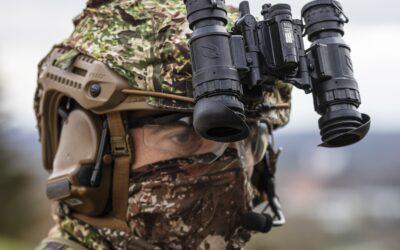INTERNATIONAL RELATIONS
INTERNATIONAL RELATIONS

The Taliban expanded their territory in northern Afghanistan on Sunday. They captured three more provincial capitals, including the large city of Kunduz, continuing their full-scale offensive, which the Afghan army appears unable to stop. Within hours, Islamist insurgents not only captured Kunduz after fierce fighting but at the end of the day seized Taloqan and Sar-e Pol as well. The last two are the capitals of the provinces south and east of Kunduz. They now occupy five of the 34 provincial capitals of Afghanistan.
A security official confirmed that government forces and local officials had fled to a nearby area due to the fact that the government sent no aid and in turn, they had to withdraw from the city. Zambula Mujahid, a Taliban spokesman, confirmed the Taliban occupation, saying that security had been restored in all cities at issue.
Additionally, a spokesman for Agence France-Presse in the city also confirmed that the Taliban have deployed fighters in all key buildings of Kunduz. The city of some 300,000 people, which had fallen to Islamists twice in 2015 and 2016, is a strategic crossroads in northern Afghanistan, between Kabul and Tajikistan.
The capture of Kunduz is the Taliban’s first major military success since their main attack in May. They took advantage of the commencement of foreign troops withdrawal, which is expected to be completed by August 31st. After occupying vast areas in the provinces with weak resistance, they turned against large urban centers surrounding provincial capitals and causing absolute chaos.
Also read: The Taliban now control more than half of Afghanistan regions
Neuralgic axis
In late June, the Taliban captured the Sir Khan Badar border post, on the Afghanistan-Tajikistan border, a key economic axis for Central Asia. The Ministry of Defence has assured that government forces are trying to recapture key areas of Kunduz, while according to officials, special forces are conducting operations aiming at regaining buildings, such as those of national radio and television.
Ibrahim Thural Bais, of the International Crisis Group (ICG), said that occupying Kunduz is of great importance, as it enables large numbers of Taliban fighters to move to other areas in northern Afghanistan. After Kunduz, Sar-e Pol also fell into the hands of the guerrillas, while on Saturday they had already occupied Sabergan in the north, the stronghold of the notorious warlord Abdul Rashid Dostum.
According to sources, government forces and the military withdrew to camps three kilometers away from Sar-e Pol. For his part, Mirwais Stanikzai, a spokesman for the Interior Ministry, said reinforcements had been sent to Sar-e Pol and Sembergan, including members of the Special Forces, saying that the cities that the Taliban want to take will soon become their graves.
Rapid advance
The inability of the authorities in Kabul to maintain control of northern Afghanistan may prove crucial to the government’s chances of survival. Northern Afghanistan was, after all, the area where the Taliban encountered the strongest resistance when they seized power in the country in the 1990s.
On Friday, Islamists also captured the city of Zaranj, the capital of Nimroz province (south), on the border with Iran. Kandahar (south) and Herat (west), Afghanistan’s second and third largest cities respectively, have also been under attack for several days, as has Lashkar Gah (south), the capital of the Taliban stronghold of Helmand province.
The rapid advance of Islamist militants has surprised both observers and Afghan security forces, despite support from the US Air Force.
The US has multiplied airstrikes, admits Nicole Ferrara, a spokeswoman for the US Central Command (USCENTCOM). She said on Saturday that the US forces have launched several airstrikes in recent days to defend our Afghan partners. Fighting and airstrikes have forced hundreds of thousands of Afghans to flee their homes.
The Taliban ruled the country from 1996 to 2001, imposing their own, extreme version of Islamic law, before being overthrown by the US-led invasion of an international military coalition.
Source: CNA
Also read: VIDEO | Afghanistan’s Fight Against Taliban – Air Force operations footage
NEWSLETTER SUBSCRIPTION
UN | Iran has increased uranium enrichment to near weapons-grade levels
Iran has further increased its stockpile of uranium enriched to near weapons-grade levels, defying international pressure, according to…
Brazil | Arrests of military and police officers for plotting the assassination of President Lula
Brazilian police have arrested five officers accused of plotting a coup which included plans to overthrow the government following the…
Sweden | Leaflets with survival instructions in the midst of the Ukrainian crisis
Sweden started sending out five million leaflets to the country’s residents yesterday, urging them to prepare for a possible conflict…
PwC Cyprus, Multimarine, SignalGeneriX, and Theophrastus Join Forces for the EDA’s Symbiosis Project
A leading Consortium comprising PwC Cyprus, Multimarine Services Ltd, SignalGeneriX Ltd, and Theophrastus Research Institute, has been…
MBDA – Matra Electronique | Joint creation of a centre of excellence for defence electronics in Europe
MBDA and its subsidiary Matra Electronique (MEL), which specialises in manufacturing high-precision electronic equipment, jointly…
THEON International | New orders amounting to €74 million having already exceeded €150 million in the 4th trimester
THEON INTERNATIONAL PLC (THEON) announced additional orders for the month of November. As a result of the…
UN | Iran has increased uranium enrichment to near weapons-grade levels
Iran has further increased its stockpile of uranium enriched to near weapons-grade levels, defying international pressure, according to…
Brazil | Arrests of military and police officers for plotting the assassination of President Lula
Brazilian police have arrested five officers accused of plotting a coup which included plans to overthrow the government following the…
Sweden | Leaflets with survival instructions in the midst of the Ukrainian crisis
Sweden started sending out five million leaflets to the country’s residents yesterday, urging them to prepare for a possible conflict…


















